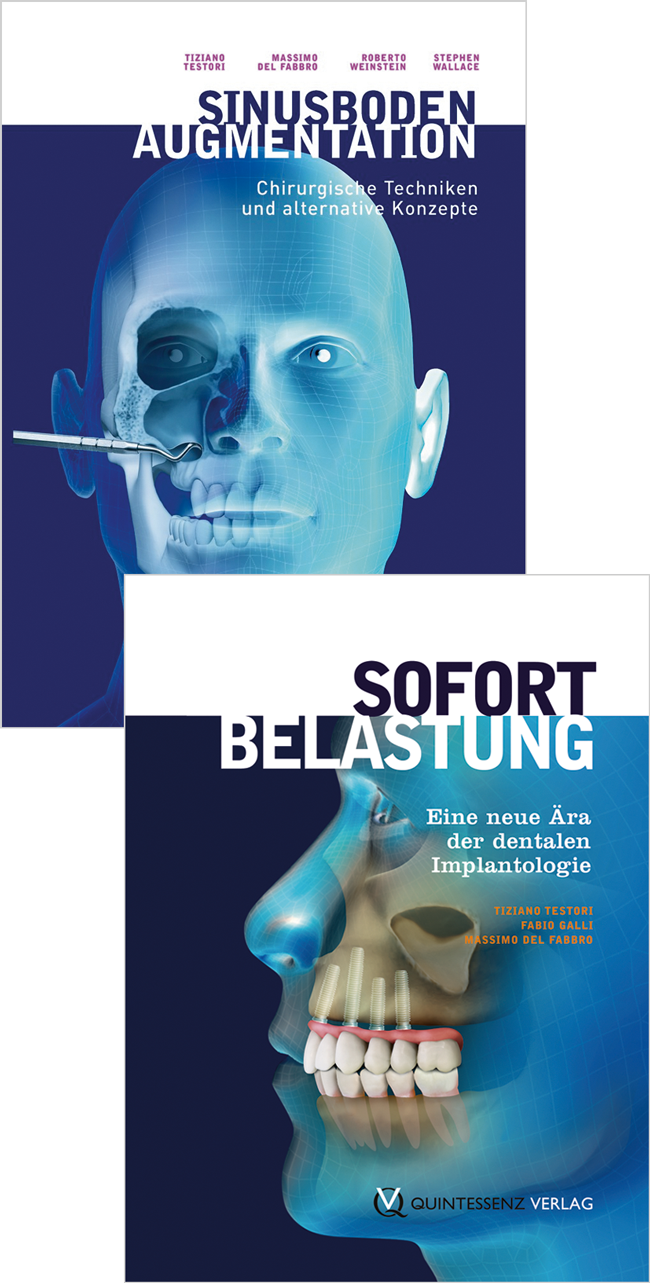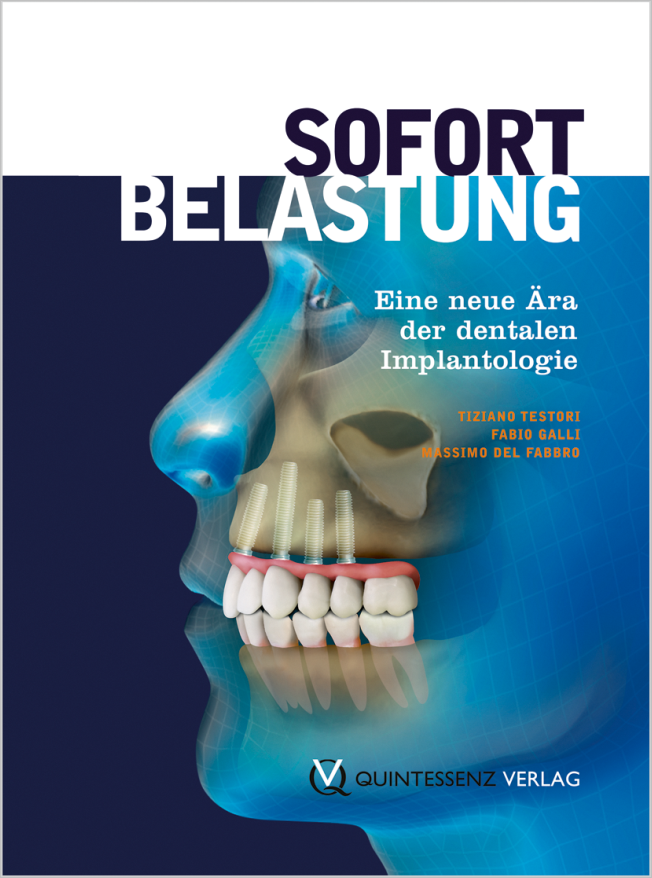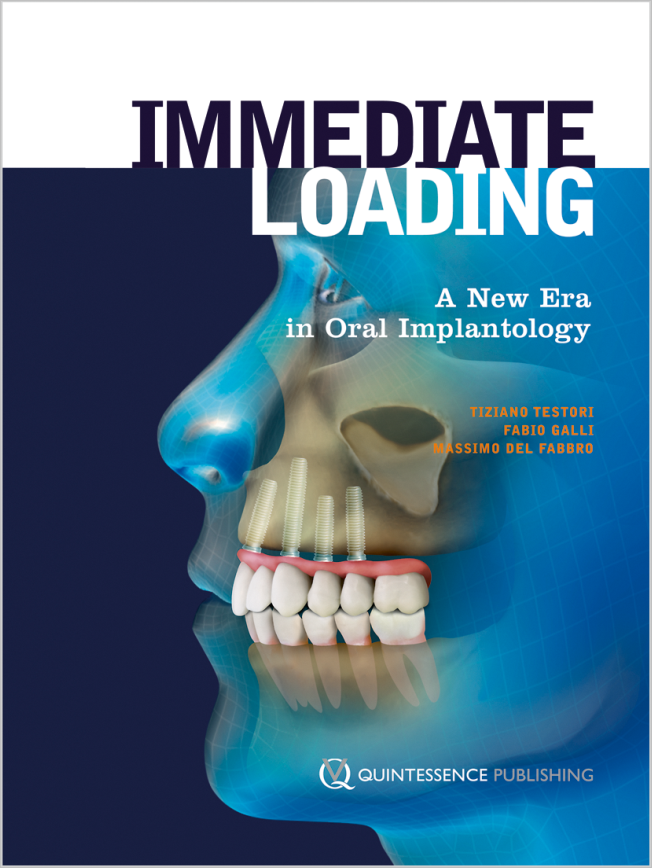International Journal of Periodontics & Restorative Dentistry, Pre-Print
DOI: 10.11607/prd.7541, PubMed ID (PMID): 400534987. Mar 2025,Pages 1-35, Language: EnglishDeflorian, Matteo Antonio / Galli, Fabio / Scaini, Riccardo / Strappa, Enrico Maria / Testori, TizianoImmediate implant placement in esthetic area is a challenging surgical procedure. In the anterior maxilla, the esthetic outcome and the tissues stability over time is highly emphasized. A thorough preoperative analysis of the local site anatomy is essential to choose the most suitable surgical and prosthetic protocol. Due to the heterogenous data from the literature, a diagnostic algorithm was developed to assist the clinician in the decision-making process for single-tooth implant rehabilitation in the anterior maxilla. The treatment options were based on the predictability of implant primary stability, integrity of the buccal bone wall, gingival phenotype, and absence or presence of gingival recessions. Within its limitations, this approach may reduce the incidence of complications and failures.
Keywords: Single-tooth Dental Implants, Alveolar Ridge Augmentation, Bone Regeneration, Tooth Extraction
International Journal of Esthetic Dentistry (DE), 2/2024
Clinical ResearchPages 124-136, Language: GermanGalli, Fabio / Deflorian, Matteo / Zucchelli, Giovanni / Del Fabbro, Massimo / Testori, TizianoEine retrospektive Studie mit 5 bis 13 Jahren NachbeobachtungZiel: In der vorliegenden retrospektiven Studie sollten die klinischen Ergebnisse von festsitzendem, auf den Prinzipien der biologisch orientierten Präparationstechnik (BOPT) basierenden Zahnersatz über mittlere bis lange Beobachtungszeiträume ausgewertet werden.
Material und Methoden: Die Behandlungsdokumentation von Patienten, die zwischen Januar 2007 und Dezember 2014 festsitzend rehabilitiert worden waren, wurden retrospektiv ausgewertet. Patienten, deren Akten die Einschlusskriterien erfüllten, wurden außerdem zu einer abschließenden Kontrolluntersuchung einbestellt. Ausgewertet wurden die parodontalen Parameter, das Vorliegen von Gingivarezessionen sowie die aufgetretenen technischen und biologischen Komplikationen.
Ergebnisse: Insgesamt 58 Patienten wurden per Recall eingeladen. Von diesen konnten 52 Patienten mit 220 überkronten Zähnen ausgewertet werden (Ausfallrate: 13,8 %). Die durchschnittliche Beobachtungsdauer waren 9,3 Jahre (Spannweite 5 bis 13 Jahre): 14 Patienten (114 überkronte Zähne) waren 5 bis 8 Jahre, 36 Patienten (106 überkronte Zähne) 9 bis 13 Jahre nachbeobachtet worden. Die prothetische Überlebensrate betrug 99,6 %. An Komplikationen waren eine Wurzelfraktur (0,4 %) und vier Verblendkeramikabplatzungen (1,8 %) dokumentiert. Sechs Zähne (2,7 % der untersuchten Kronen) zeigten eine Gingivarezession von < 1 mm und 13 Zähne (24 Stellen) wiesen eine Sondierungstiefe von 4 mm auf (5,9 % der prothetischen Kronen/1,8 % der sondierten Stellen). Schließlich wurde an 20 Stellen (1,5 %) bzw. 7 Zähnen (3,2 %) Sondierungsbluten beobachtet.
Schlussfolgerungen: Die Präparation nach den BOPT-Regeln (d. h. mit vertikaler, kantenfreier Präparation) führte mittel- bis langfristig zu einem gesunden Parodont und stabiler Gingiva. Das prothetische Behandlungsergebnis blieb dauerhaft erhalten.
Keywords: biologisch orientierte Präparationstechnik, BOPT, parodontale Gesundheit, Gingivarezession, Weichgewebestabilität, retrospektive Studie
International Journal of Esthetic Dentistry (EN), 2/2024
Clinical ResearchPubMed ID (PMID): 38726854Pages 112-124, Language: EnglishGalli, Fabio / Deflorian, Matteo / Zucchelli, Giovanni / Del Fabbro, Massimo / Testori, TizianoA 5- to 13-year follow-up retrospective studyAim: The present study was a retrospective medium- to long-term follow-up assessment of the clinical outcomes of patients rehabilitated with fixed prostheses according to the biologically oriented preparation technique (BOPT) principles.
Materials and methods: Clinical records of patients rehabilitated between January 2007 and December 2014 were retrospectively assessed. Patients whose records met the inclusion criteria were also recalled for a hygiene visit. Data analyzed included the patients’ periodontal condition, the presence of gingival recessions as well as any technical or biologic prosthetic complication.
Results: Fifty-eight patients were recalled; of these, 52 patients who had received 220 crowns were available for the evaluation (the dropout being 13.8%). The average follow-up was 9.3 years (range 5 to 13 years): 14 patients (114 prosthetic crowns) had a follow-up between 5 and 8 years, and 36 patients (106 prosthetic crowns) between 9 and 13 years. The prosthetic survival rate was 99.6%. One radicular fracture (0.4%) and four chippings of the veneering porcelain (1.8%) were recorded. Six teeth (2.7% of the examined prosthetic crowns) presented gingival recession of < 1 mm, and 13 teeth (24 sites) had a pocket probing depth of 4 mm (5.9% of the prosthetic crowns/1.8% of the sites). Finally, 20 sites (1.5%) in seven teeth (3.2%) showed bleeding on probing.
Conclusions: Tooth preparation according to the BOPT principles (ie, with a vertical finishing line) resulted in medium- to long-term periodontal health and stability of the gingival tissue, and prosthetic success was maintained.
Keywords: BOPT, periodontal health, gingival recession, soft tissue stability, retrospective study
International Journal of Periodontics & Restorative Dentistry, 5/2020
DOI: 10.11607/prd.4408, PubMed ID (PMID): 32926001Pages 711-e721, Language: EnglishGalli, Fabio / Deflorian, Matteo / Parenti, Andrea / Testori, Tiziano / Del Fabbro, MassimoClinical records of patients who underwent implant-supported rehabilitation according to the biologically oriented preparation technique (BOPT) principles were retrospectively analyzed. Records of 189 nonconsecutive patients who received 502 implants were reviewed. At the last follow-up visit (occurring on average 5.11 years after prosthesis delivery), 466 (92.8%) implants had a Gingival Index of 0, and 491 (97.8%) presented no bleeding on probing. Four hundred eighty-nine crowns on as many implants (97.4%) showed no sign of gingival recession. Technical complications occurred with 10 implants (2.0%) and 6 patients (3.2%). Biologic complications were detected with 14 implants (2.8%) and 6 patients (3.2%). When the BOPT approach is applied to rehabilitate patients using implant-supported prostheses, excellent medium-term results concerning soft tissue health may be achieved.
Implantologie, 4/2020
Pages 361-372, Language: GermanGalli, Fabio / Deflorian, Matteo / Parenti, Andrea / Testori, Tiziano / Del Fabbro, MassimoEine retrospektive Studie über einen mittleren BeobachtungszeitraumDie Behandlungsunterlagen von Patienten, die eine implantatgetragene Rehabilitation nach den Prinzipien der biologisch orientierten Präparationstechnik (Biologically Oriented Preparation Technique, BOPT) erhalten hatten, wurden retrospektiv analysiert. Ausgewertet wurden die Akten von 189 nichtkonsekutiven Patienten mit insgesamt 502 Implantaten. Bei der letzten Kontrolluntersuchung (im Durchschnitt 5,1 Jahre nach Eingliederung des Zahnersatzes) fand sich an 466 Implantaten (92,8 %) ein Gingivaindex von 0 und 491 Implantate (97,8 %) zeigten kein Sondierungsbluten. 498 Kronen auf ebenso vielen Implantaten wiesen keine Gingivarezession auf. Technische Komplikationen traten bei 10 Implantaten (2,0 %) bzw. 6 Patienten (3,2 %) auf. Bei 14 Implantaten (2,8 %) bzw. 6 Patienten (3,2 %) kam es zu biologischen Komplikationen. Wenn bei der Rehabilitation mit implantatgetragenem Zahnersatz die BOPT angewendet wird, können mittelfristig hervorragende Resultate bezüglich der Weichgewebegesundheit erreicht werden.
Die vorliegende Arbeit basiert auf der englischen Originalpublikation „Implant Rehabilitation According to the Biologically Oriented Preparation Technique (BOPT): A Medium-Term Retrospective Study” (Int J Periodontics Restorative Dent 2020;40:711–719.).
Keywords: implantatgetragen, Rehabilitation, biologisch orientierte Präparationstechnik, Plattformswitch, Federrand, Tangentialpräparation, Gingivarezession, Komplikation
International Journal of Oral Implantology, 3/2020
PubMed ID (PMID): 32879928Pages 235-239, Language: EnglishBassi, Francesco / Cicciù, Marco / Di Lenarda, Roberto / Galindo Moreno, Pablo / Galli, Fabio / Herford, Alan Scott / Jokstad, Asbjørn / Lombardi, Teresa / Nevins, Myron / Sennerby, Lars / Schierano, Gianmario / Testori, Tiziano / Troiano, Giuseppe / Vercellotti, Tomaso / Stacchi, ClaudioPurpose: Piezoelectric bone surgery was introduced into clinical practice almost 20 years ago as an alternative method for cutting bone in dental surgical procedures, in an attempt to reduce the disadvantages of using conventional rotary instruments. The aim of this Consensus Conference was to evaluate the current evidence concerning the use of piezoelectric surgery in oral surgery and implantology.
Materials and methods: Three working groups conducted three meta-analyses with trial sequential analysis, focusing on the use of piezoelectric surgery in impacted mandibular third molar extraction, lateral sinus floor elevation and implant site preparation. The method of preparation of the systematic reviews, based on comprehensive search strategies and following preferred reporting items for systematic reviews and meta-analyses (PRISMA) guidelines, was discussed and standardised.
Results: Moderate/low evidence suggests that piezoelectric surgery is significantly associated with a more favourable postoperative course (less pain, less trismus) after impacted mandibular third molar extraction than conventional rotary instruments. Moderate evidence suggests that implants inserted with piezoelectric surgery showed improved secondary stability during the early phases of healing compared with those inserted using a drilling technique. Strong/moderate evidence suggests that piezoelectric surgery prolongs the duration of surgery in impacted mandibular third molar extraction, sinus floor elevation and implant site preparation, but it is unclear whether the slight differences in duration of surgery, even if statistically significant, represent a real clinical advantage for either operator or patient. Weak evidence or insufficient data are present to draw definitive conclusions on the other investigated outcomes.
Conclusions: Further well-designed trials are needed to fully evaluate the effects of piezoelectric surgery, especially in implant site preparation and sinus floor elevation.
Keywords: impacted mandibular third molar extraction, implant site preparation, piezoelectric surgery, sinus augmentation, systematic review
International Journal of Oral Implantology, 2/2020
PubMed ID (PMID): 32424379Pages 109-121, Language: EnglishStacchi, Claudio / Troiano, Giuseppe / Berton, Federico / Lombardi, Teresa / Rapani, Antonio / Englaro, Andrea / Galli, Fabio / Testori, Tiziano / Nevins, MyronAims: To evaluate whether piezoelectric bone surgery (PBS) for lateral maxillary sinus floor elevation reduces risk of intraoperative complications, requires prolonged surgical time and improves the survival rate of dental implants in comparison with conventional rotary instruments.
Materials and methods: This meta-analysis followed PRISMA guidelines and was registered in the PROSPERO database (CRD42019122972). The PubMed, Embase, Scopus and Open Grey databases were screened for articles published from 1 January 1990 to 31 December 2018. The selection criteria included randomised controlled trials (RCTs) and case-control studies (CCTs) comparing PBS with rotary instruments in lateral sinus augmentation and reporting intraoperative and postoperative outcomes (e.g. sinus membrane perforations, surgical time and implant failure rate). The risk of bias assessment was performed using the Cochrane Collaboration's tool for RCTs. A meta-analysis was performed, and the power of the meta-analytic findings was assessed via trial sequential analysis (TSA).
Results: Four RCTs met the inclusion criteria and were included in the review. The meta-analysis showed that, although a lower incidence of membrane tearing occurred when using PBS, the difference between the two groups was not significant. However, the power of evidence for this outcome, as determined by the TSA, was weak. Moreover, there was moderate evidence suggesting that PBS prolongs the surgery duration (mean difference of 3.43 minutes), whilst insufficient data was present to assess if PBS improves the survival rate of implants inserted in augmented sinuses.
Conclusions: The power of the evidence was too weak to confirm the above-mentioned findings and further well-designed randomised clinical trials are needed to draw definitive conclusions.
Keywords: intraoperative complications, membrane perforation, piezosurgery, sinus floor elevation
Conflict-of-interest statement: The authors report no conflicts of interest related to this study. This study received no external funding.
International Journal of Periodontics & Restorative Dentistry, 2/2018
Online OnlyDOI: 10.11607/prd.3338, PubMed ID (PMID): 29447308Pages 25-28, Language: EnglishGalli, Fabio / Deflorian, Matteo / Testori, TizianoThis article describes a simplified technique for relining provisional prostheses on natural abutments that can be applied to this specific type of tooth preparation with feather-edge finish line. Starting from a diagnostic waxup, a provisional fixed restoration is constructed, containing all the correct structural information. This includes the controlled depth of the prosthetic margin into the gingival sulcus, the emergence profile, and the area from the emergence profile to the gingival third. Chair time is saved during the clinical procedures because the finishing and polishing steps are shortened, and the resulting provisional restoration is precise and highly biocompatible. This technique allows for a simple and quick relining and finishing procedure and for the delivery of an esthetic and biocompatible provisional restoration.
The International Journal of Oral & Maxillofacial Implants, 4/2017
DOI: 10.11607/jomi.5578, PubMed ID (PMID): 28708922Pages 904-911, Language: EnglishTestori, Tiziano / Galli, Fabio / Fumagalli, Luca / Capelli, Matteo / Zuffetti, Francesco / Deflorian, Matteo / Parenti, Andrea / Del Fabbro, MassimoPurpose: To analyze the long-term outcome of fixed prostheses supported by six implants, two of which were tilted, placed in the maxilla and immediately loaded more than 10 years earlier.
Materials and Methods: A retrospective review of implants placed between May 29, 2003 and February 12, 2005 and used to support immediately loaded fixed dental prostheses in the maxilla was conducted. The features of failed implants were analyzed. In the most recent follow-up visits, survival of individual implants and prostheses was verified, and modified Plaque Index as well as modified Sulcular Bleeding Index were assessed. Patients also filled out a questionnaire requiring graded responses from 0 (poor) to 10 (excellent) that was designed to assess their quality of life.
Results: A total of 162 implants were placed between May 29, 2003 and February 12, 2005 to support immediately loaded maxillary fixed prostheses of 27 totally edentulous patients (19 female, 8 male). Three patients (1 male, 2 female) dropped out, so 144 implants were followed up. Seven of the 144 original implants failed, corresponding to a survival rate of 95.1% over 10 years. All the failures occurred within 2 years after surgery. Patients' responses to the questionnaire produced an average score of 8.4 to 8.8, showing a relevant degree of satisfaction.
Conclusion: Based upon this study of 27 patients who received immediately loaded maxillary full-arch fixed implant-supported prostheses supported by two tilted and four axial implants, it appears that this is a reliable procedure with a high long-term survival rate and a high level of patient satisfaction.
Keywords: immediate loading, maxilla, tilted implants, 10-year follow-up
International Journal of Oral Implantology, 3/2016
PubMed ID (PMID): 27722221Pages 219-230, Language: EnglishZuffetti, Francesco / Esposito, Marco / Galli, Fabio / Capelli, Matteo / Grandi, Giovanni / Testori, TizianoPurpose: To compare peri-implant bone and soft-tissue levels of immediate non-occlusally loaded versus non-submerged early loaded implants in partially edentulous patients 10 years after loading. Materials and methods: Fifty-two patients were randomised in five Italian private practices: 25 in the immediately loaded group and 27 in the early loaded group. To be immediately loaded, single implants had to be inserted with a torque of at least 30 Ncm, and splinted implants with a torque of at least 20 Ncm. Immediately loaded implants were provided with non-occluding temporary restorations within 48 h. After 2 months, the provisional restorations were put in full occlusion. Implants were early loaded after 2 months. Definitive restorations were provided 8 months after implant placement. Outcome measures were prosthesis failures, implant failures and complications, recorded by non-blinded assessors, and peri-implant bone and soft-tissue levels evaluated by blinded assessors. Results: Fifty-two implants were loaded immediately and 52 early. Three patients with 8 implants dropped out from the immediate group versus two patients with 3 implants from the early loaded group; all remaining patients were followed for at least 10 years after loading. One single immediately loaded implant failed 2 months after placement. Three patients with immediately loaded implants and two with early loaded implants were affected by complications. There were no statistically significant differences for implant/prosthesis failures (Fisher's exact test: P = 0.294; difference = 4%, 95% CI: -16% to 24%) and complications between groups (Fisher's exact test: P = 0.574; difference = 4.5%, 95% CI: -12% to 21%). Both groups gradually lost peri-implant bone in a highly statistically significant way at 2, 8 and 14 months, and at 4, 5 and 10 years. After 10 years, immediately loaded patients lost an average of 1.34 mm and early loaded patients lost 1.42 mm of peri-implant marginal bone. At 10 years, there was a statistically significant recession (P < 0.001) of the vestibular soft tissues from baseline (delivery of the final restorations 8 months after implant placement) at both immediate (0.38 mm) and early (0.25 mm) loaded implants. There were no statistically significant differences in terms of peri-implant bone (difference = 0.08 mm, 95% CI: -0.49 to 0.65; P = 0.49) and soft-tissue level changes (difference = 0.07 mm, 95% CI: -0.48 to 0.62; P = 0.469) between the two groups at 10 years after loading. Conclusions: In well-maintained patients, complications are uncommon and healthy and stable peri-implant tissues can be maintained for 10 years around both immediate and early loaded implants.
Keywords: dental implants, early loading, follow-up, immediate loading, partial edentulism
Conflict-of-interest statement: This trial was independently designed and initiated by the investigators. BIOMET 3i, the manufacturer of the implants used in this investigation, provided partial economic support at a later stage, and finally ZIMMER-BIOMET partially supported the present publication, however data belonged to the authors and by no means did the sponsor interfere with the conduct of the trial or the publication of its results.






